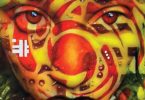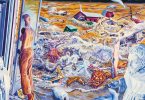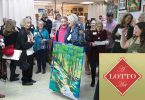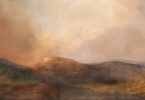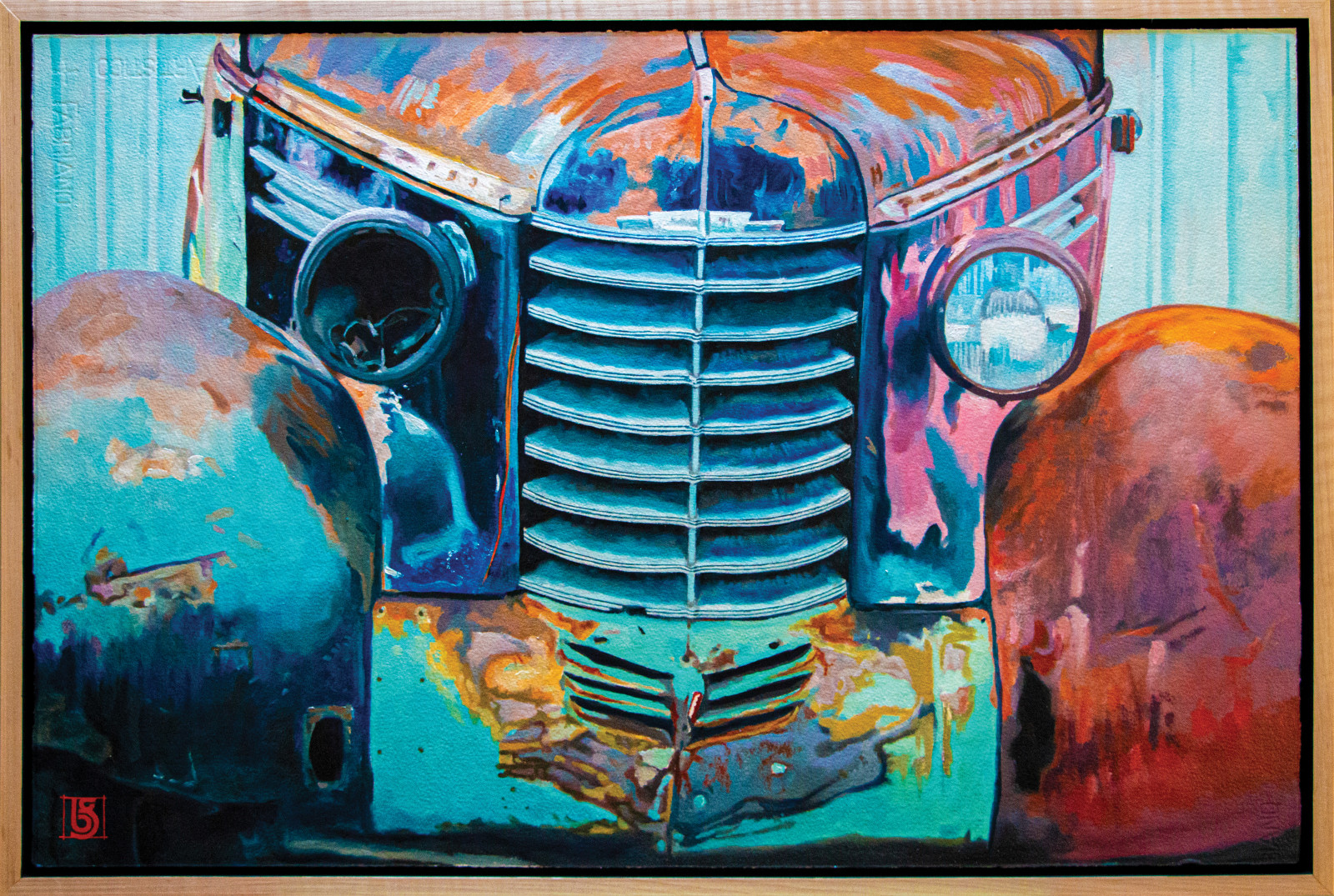
Rust in Peace #1. Bill George, artist
By Gina Malone
Growing up in Brooklyn, NY, Bill George discovered art at an early age and found inspiration all around him as he took up pencil and paintbrush. “I would often draw family members at the kitchen table,” he says. “My father worked for MGM Studios. He would bring me stills from movies when I wanted to use them as a reference for a painting.”
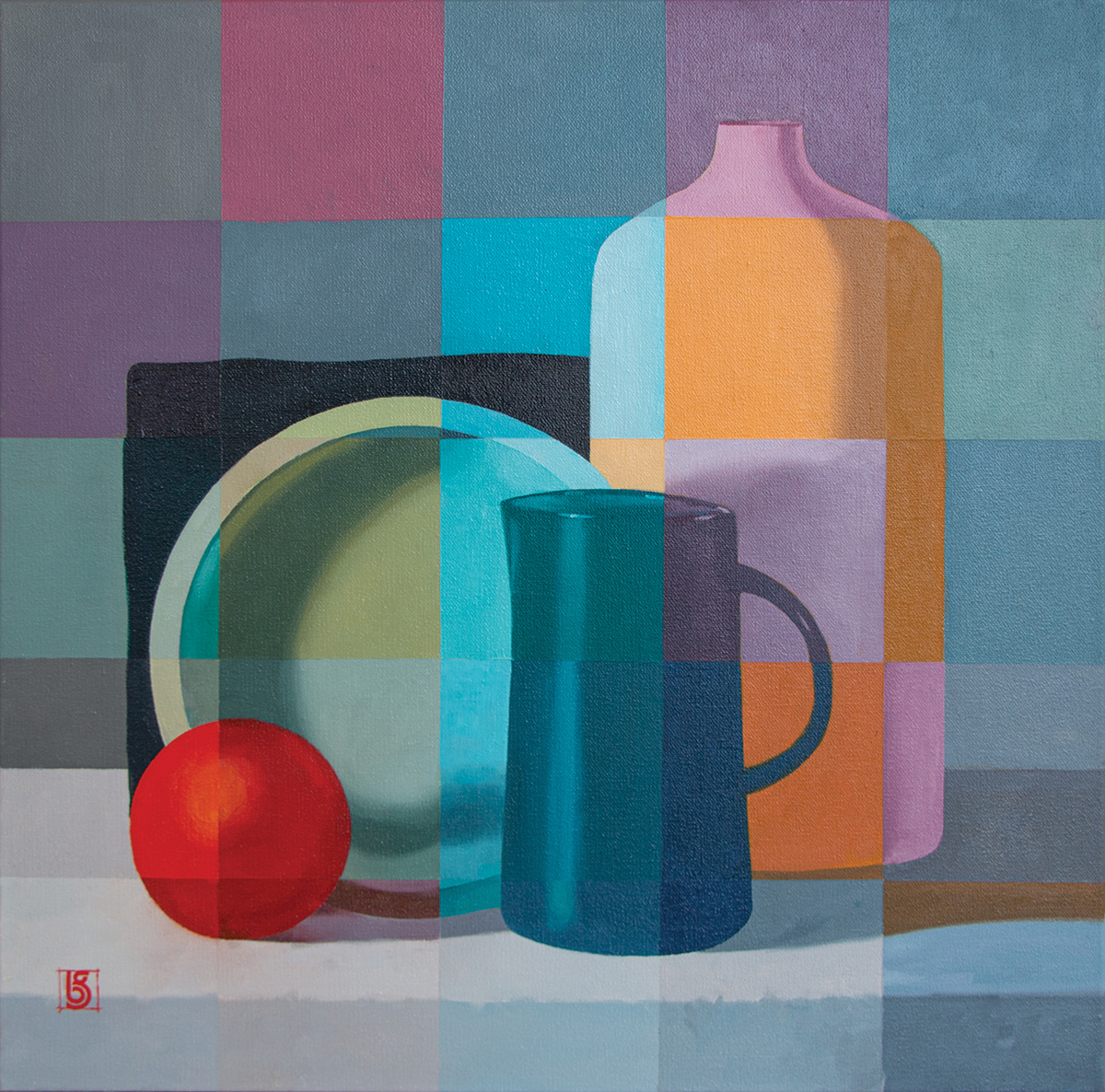
Square x Square 1. Bill George, artist
When it came time to choose a career, and because he had always been encouraged by his parents, he chose the field of art. “I originally wanted to be an illustrator,” George says, “but switched to graphic design as a career, opening my business on Madison Avenue in NYC where my urge to do art was satisfied—creating comps for ads and commercial illustrations—at a time when everything was hand-drawn, before computers.”
When he moved to White Plains, NY, the Reilly Group held an open studio two nights a week for sessions drawing live models. “Since I had studied with Frank Reilly at his school in NYC, I was familiar with his techniques,” George says. “That got me on the road to oil painting.”
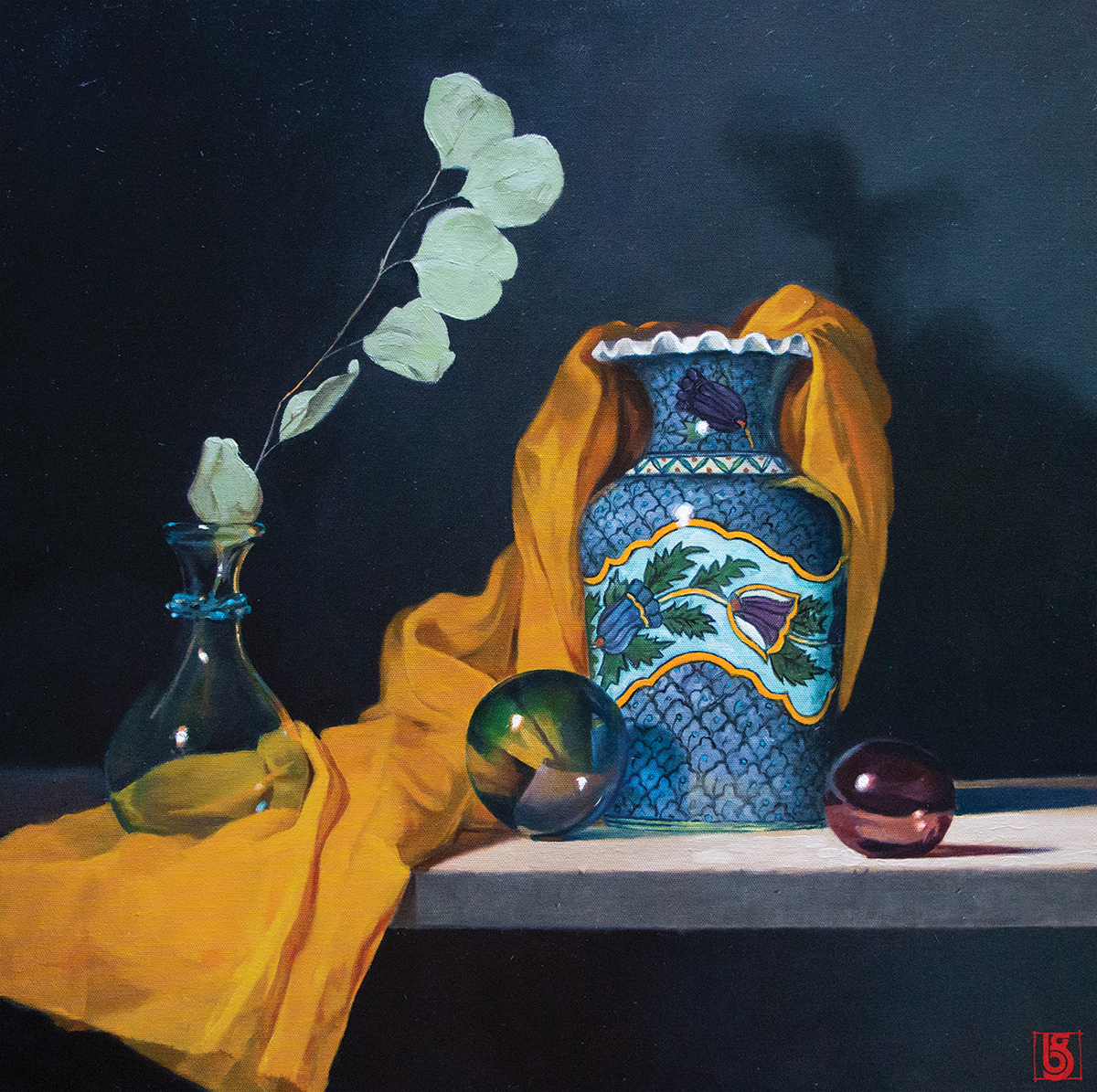
Draped in Gold Bill George, artist
Throughout his career, he has afforded himself study with many teachers so that his approach to painting has evolved to include still life, copies of Old Masters, figurative work, landscapes, frescoes and animals. “When I moved to Asheville, I studied at the Fine Arts League of the Carolinas with Ben Long, known for his frescoes throughout North Carolina,” says George. He and his wife Bernadette St. Pierre-George, an artist also, have taken many workshops at Flying Colors Art Workshops in Acapulco, Mexico. “Meeting artists from all over the world as well as world-class instructors—Diane Maxey, Linda A. Doll, Cheng-Kee Chee, Barbara Nechis, Sheila Parsons—helped me to see watercolor as a fine art medium,” he says.
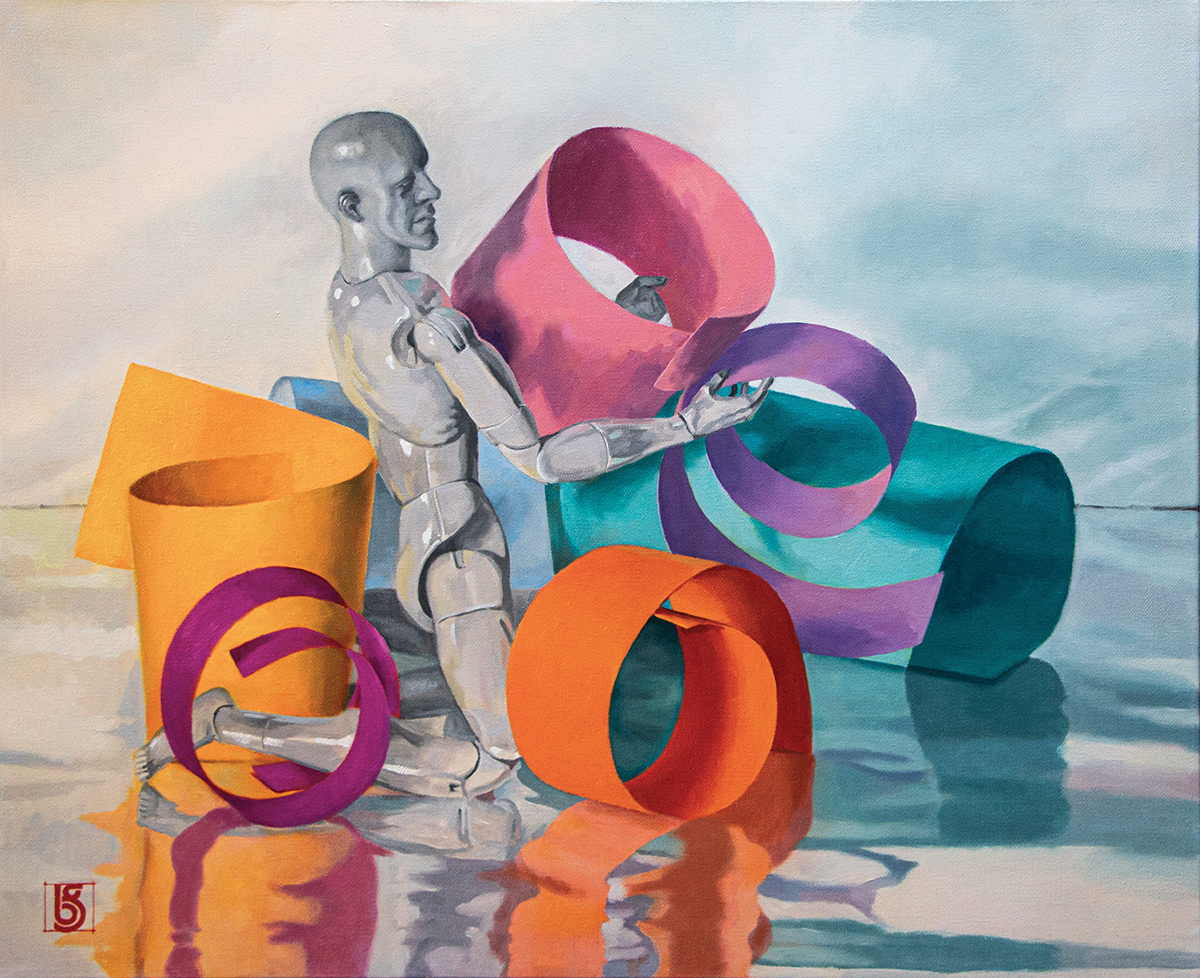
Paper Curls 3. Bill George, artist
George paints in oils currently, but works in many mediums: watercolor, pastel, gouache, fresco and charcoal. “I start a new painting with a detailed drawing or I just start drawing with a brush,” he says. “I paint in the indirect method: a method in which the final effects in a painting are built up gradually by placing several layers of paint, one over the other, the upper layers modifying, but not altogether concealing the lower layers. I finish the final details with glazes and scumbling.”
George often challenges himself by planning and executing series of works. “The Square x Square paintings evolved when I thought, why don’t I paint a still life but in an untraditional manner,” he says. “I thought of my icon portraits which are painted in a similar style (with squares) and used that idea to create a still life with an edgier look. Some squares with subtle color changes and some with vibrant color changes.”
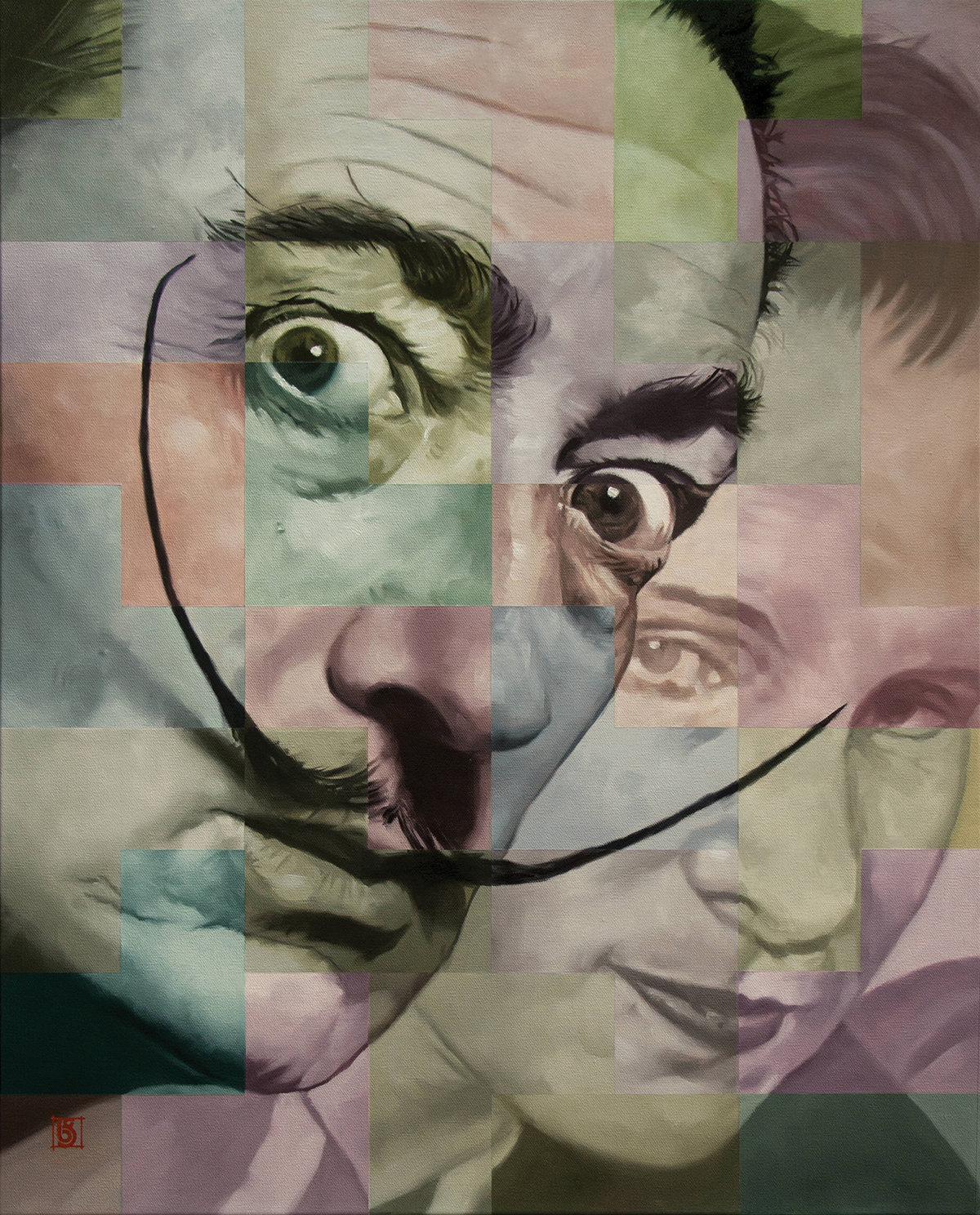
Dali & Gala. Bill George, artist
His series generally are composed of six to nine paintings, and he finds excitement in seeing how each piece relates to the others as he works. The Iris series was one he wanted to have finished for an upcoming show at the Asheville Gallery of Art. “I painted one a month for the five months preceding the show,” he says. “That was a marathon, and I finished just in time. After that, I didn’t paint for two months and spent time thinking of the next series.”
With subjects, he enjoys the unexpected. “I like to show people something they may not have seen, or from a different perspective,” he says. “In my Rust in Peace series, I thought, people are used to seeing new cars, but to make an abandoned car the subject of a painting, that’s something different!”
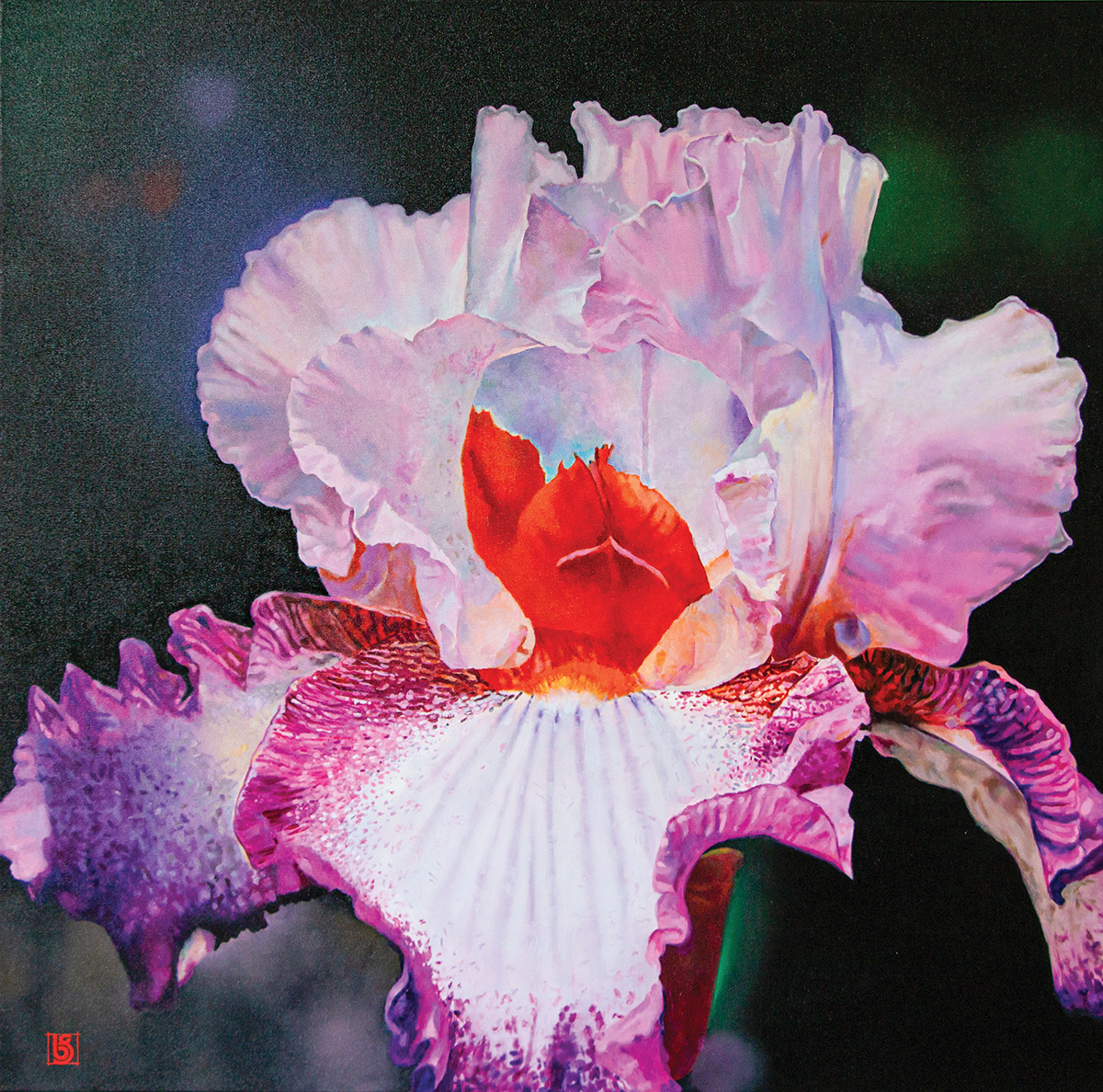
Iris #7, Sweet Pallida Lam. Bill
George, artist
His work is represented by the Asheville Gallery of Art, where, says gallery president Margie Kluska, George takes time to help other artists with all aspects of their art—from gallery operations to framing artwork. “His paintings are exquisite representations of still-life objects—autos, flowers, paper/scissors/stones and, recently, paper curls,” Kluska says. “He chooses interesting backgrounds—sometimes subtle and sometimes adding pizzazz to his work. The details of his objects are so realistic as to make you believe they are photos, but they have an added touch of glamour that pulls you into the painting.”
Like many area artists, Hurricane Helene put things into perspective for George. “As an artist, I find myself turning to my work as both a refuge and a way to process what has happened,” he says. “Painting allows me to translate loss and resilience into something that speaks beyond words.”
Learn more about Bill George Art at BillGeorge.net, and follow on Facebook (bgeorge 912) and Instagram (billgeorge_art). Studio visits are by appointment, and can be arranged by calling 914.462.1690 or emailing bgeorge@synergyarts.com. His work is available at Asheville Gallery of Art, 82 Patton Avenue, Asheville. For more about AGA, visit AshevilleGalleryofArt.com.

